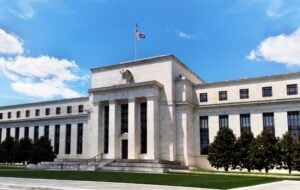Many mainstream economists believe that adopting a gold standard would be an economic disaster. But most of their objections appear to be inconsistent with the actual historical evidence.
My new working paper, “Ben Bernanke and the Gold Standard,” co-authored with Robin Aguiar-Hicks and Daniel Smith, considers many economists’ common beliefs about the gold standard to see if they are consistent with the empirical evidence. We evaluate six specific “weaknesses” of the gold standard discussed by Ben Bernanke in a lecture he gave at George Washington University in 2012.
1. “Because the money supply is determined by the supply of gold, it cannot be adjusted in response to changing economic conditions.” (p.23)
This statement is misleading in several ways. First, the gold standard does automatically respond to changes in economic conditions because it is based on the forces of supply and demand. When people demand more money, gold producers supply more. When demand falls, they supply less. Second, Bernanke implies that the Fed can adjust the money supply in response to changing economic conditions in order to mitigate business cycles and stabilize the economy. Most evidence, however, indicates economic stability has not improved under the Fed and has in many ways been worse. Third, it’s not true that the government cannot influence the money supply on a gold standard. Even before the Fed, U.S. government officials as early as Alexander Hamilton attempted to influence the supply of money through the purchase and sale of Treasury bonds.
2. “Over the medium run it sometimes caused periods of inflation and deflation.” (p.26)
Everyone agrees the gold standard created better long-run price stability than the Fed. Critics, however, claim that short-run stability is more important and has been better under the Fed. The evidence shows the opposite. As discussed in a previous blog post, my paper “Has the Fed Improved Economic Performance?” finds the volatility of inflation was actually lower in the national banking period before the Fed than in the post-World War II period prior to the Great Moderation.
3. “The gold standard did not prevent frequent financial panics.” (p.25)
This statement implies the Fed can prevent financial panics. The evidence, however, shows that financial panics have not been less frequent or less severe under the Fed. In fact, the Fed presided over the Great Depression and the Great Recession, the worst two panics in U.S. history!
4. “The effects of bad policies in one country can be transmitted to other countries if both are on the gold standard.” (p.24)
If the Fed has been better at preventing the transference of bad policies between countries, we should expect international business cycles to become less synchronized under the Fed. In fact, business cycles appear to have become more synchronized, especially since the Fed cut its final ties to the gold standard by abandoning the Bretton Woods system of international exchange rates in the early 1970s.
5. “A gold standard is subject to speculative attack and ultimate collapse.” (p.25)
This objection is curious because economists consider speculation to be a good thing. If the government tries to peg a currency at a rate that is much different than its market value, then speculators will force a revaluation of the currency. That’s a good thing because it allows the currency to return to its proper value. Bernanke is corrects that speculation is bad for the central banker, but it’s good for the economy.
6. “there’s an awful big waste of resources.” (p.13)
Bernanke is correct that there is some cost to digging gold up out of the ground in order to use it as money, but this objection is overstated for two reasons. First, as Larry White has repeatedly pointed out, most estimates greatly overstate the resource cost of gold because they assume banks will hold 100% reserves, which has never been true historically. Second, Bernanke overlooks the resources that are wasted under the Fed. The high rates of inflation under the Fed create malinvestments and deadweight economic losses. Long-term investment has declined under the Fed since no one knows what future prices will be. It’s clear the high costs of inflation under the Fed exceed the moderate resource costs of a gold standard.





